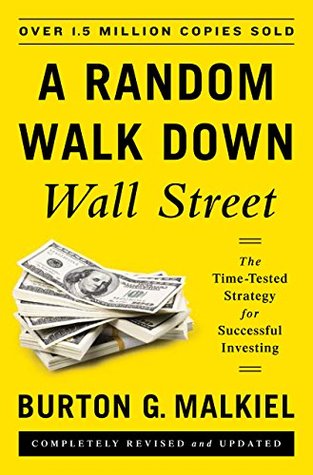More on this book
Community
Kindle Notes & Highlights
illusion of control that can lead investors to see trends that do not exist or to believe that they can spot a stock-price pattern that will predict future prices.
mistakenly to use “similarity” or “representativeness” as a proxy for sound probabilistic thinking.
“representative heuristic”
particular group should combine “representativeness” with base rates (the percentage of the population falling into various groups).
informed discussion of the group improves the decision-making process. The wisdom of crowd
Groups of individuals will sometimes reinforce one another into believing that some incorrect point of view is, in fact, the correct one.
what other people said actually changed what subjects believed they saw. It seems that other people’s errors actually affect how someone perceives the external world.
People’s choices are motivated instead by the values they assign to gains and losses. Losses are considered far more undesirable than equivalent gains are desirable.
language used to present the possible gains and losses will influence the final decision that is made.
loss aversion leads many investors to make costly mistakes.
In the face of sure losses, people seem to exhibit risk-seeking behavior.
people are risk-averse when considering possible gains
emotions of pride and regret may be behind the tendency of investors to hold on to their losing positions and to sell their winners.
reluctance to take losses is clearly non-optimal according to rational investment theory
Selling stocks with gains (outside tax-advantaged retirement accounts) involves paying capital gains taxes. Selling stock on which losses have been realized involves reducing taxes
Behavioralists believe that important limits to arbitrage exist that prevent out-of-whack prices from being corrected.
who tries to “correct” perceived mispricings also runs the risk that investors will become even more overenthusiastic about the prospects for the “overpriced” security.
The market can remain irrational longer than the arbitrageur can remain solvent. This
the security that is shorted is borrowed in order to deliver it to the buyer.
For an arbitrage to be effective, there must be a similar fairly priced security that can be bought to offset the short position and that can be expected to rise if some favorable event occurs that influences the whole market or the sector
cannot rely completely on arbitrage to smooth out any deviations of market
If you sit down at the table and can’t figure out who the sucker is, get up and leave because it’s you.
Any investment that has become a topic of widespread conversation is likely to be especially hazardous to your wealth.
the portfolios of those households that traded the most substantially underperformed more passive benchmarks.
The decision not to sell is exactly the same as the decision to buy the stock at the current price.
IPOs underperform the total stock market
will never be allowed to buy the really good IPOs at the initial offering price. The hot IPOs are snapped up by the big institutional investors
Steer clear of any hot tips.
“Market timing can only be accomplished by liars.”
definition of “smart beta”
gain excess (greater than market) returns by using a variety of relatively passive investment strategies that involve no more risk than would be assumed by investing in a low-cost Total Stock Market index
tilt (or flavor) the portfolio in some direction such as “value” versus “growth,” smaller versus larger companies, relatively strong stocks versus weak, and low-volatility stocks versus high-volatility ones.
Value Wins
in low-multiple stocks. If growth does materialize, both the earnings and the earnings multiple will likely increase, giving the investor a double benefit.
Stocks that sell at low ratios of price to book value tend to produce higher future returns.
Never forget that low P/E multiples and low price-to-book-value (P/BV) ratios can reflect risk factors that are priced into the market.
Smaller Is Better
small-company stocks to generate larger returns than those of large-company stocks.
small firms may be riskier than larger firms and deserve to give investors a higher rate of return.
risk-adjusted basis depends upon how one measures risk.
Momentum and Reversion to the Mean
short holding periods, there is some evidence of momentum in the stock market.
based on behavioral considerations; the second, on sluggish responses to new information.
statistically strong pattern of return reversal, but not one that implied an inefficiency in the market that would enable investors to make excess returns.
Low Volatility Can Produce High Returns
the higher the beta (risk) of any stock or portfolio, the higher should be the return.
empirical support for the theory is weak.
Relatively undiversified portfolios are a characteristic of all the “smart beta” strategies.
“smart beta” strategies represent active management rather than indexing.
If “smart beta” funds generate above average returns, it can’t be at the expense of traditional index-fund investors—it must be at the expense of all active managers who do not hold the market portfolio.


